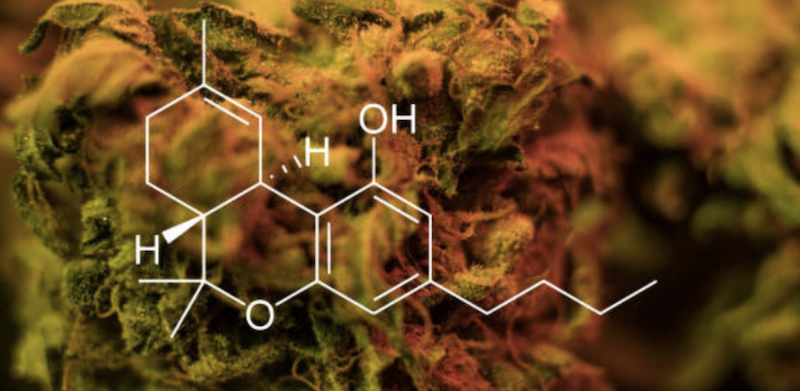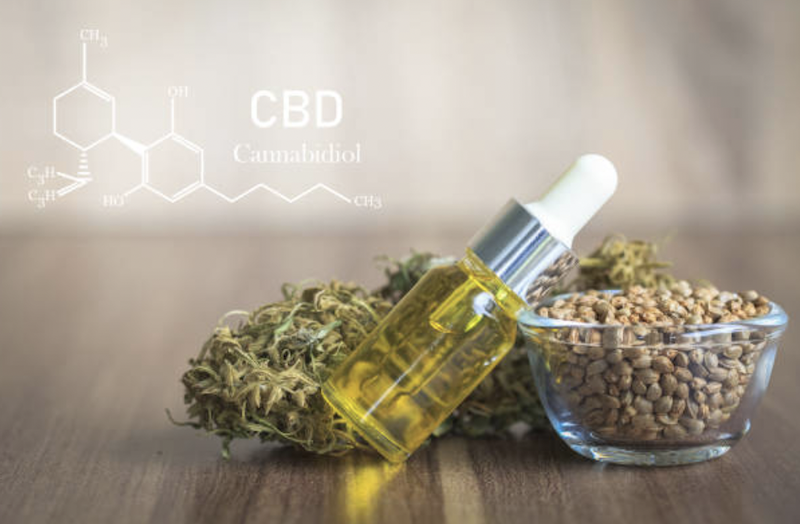The cannabis industry is always changing and bringing in new strains and products, so staying updated with the newest trends can be quite challenging.
This blog post will enlighten you on one compound that’s been gaining massive attention lately and whether or not it’s the right flower for you.
If you’re new to the weed industry or a skilled cannabis connoisseur, you might be familiar with THC, the major psychoactive compound in cannabis. What about THCA?
What Is THCA Flower
Tetrahydrocannabinolic acid or THCA – precisely Delta-9 – is a non-psychoactive and naturally occurring cannabinoid in cannabis (Cannabis sativa) and hemp plants. It exists mainly in freshly young, harvested cultivars.
When heated, THCA converts to THC. This is done through non-enzymatic reactions, also called decarboxylation. This heating process activates the psychoactive properties of cannabis. Click here to get a breakdown of the types of cannabis.
At the molecular stage, tetrahydrocannabinolic acid is missing an essential element called the carboxyl ring. This component is required to create intoxicating effects; it binds the cannabinoid receptors in the human brain.
Consuming cannabis in its raw form won’t do the trick for those seeking an ecstatic high. However, raw THCA plants have promise and potential and provide many therapeutic applications.
Can THCA Flower Get One High?
Everyone’s body differs and reacts differently to THCA. In some, it produces an intoxicating effect, while in others, it doesn’t have the same impact. In its raw form, the weed is non-psychoactive.
However, exposing it to heat through decarboxylation converts it to THC, producing mind-altering effects. This is when the “high” comes in. Sprinkling this flower alone on your smoothies or salad can’t offer any magical feeling since it’s raw and the decarboxylation process hasn’t happened yet.
Note that various factors influence the results and potency of the tetrahydrocannabinolic acid plant, such as cannabis strain, the quantity consumed, and the means of consumption.
Potential Health Benefits Of THCA
1. Neuroprotective Effects
Based on research, tetrahydrocannabinolic acid plants can protect against neurodegenerative diseases like Alzheimer’s and Parkinson’s. The cannabinoid plant’s neuroprotective properties might help improve cognitive function, slow the advancement of neurodegenerative diseases, and safeguard brain health.
2. Anti-Inflammatory Properties
The tetrahydrocannabinolic acid plant promises to minimize inflammation – a perpetrator behind diverse health issues such as heart disease, autoimmune conditions, and arthritis. tetrahydrocannabinolic acid helps to improve overall well-being, aid in weight loss, and also manage pain.
3. Anti-Emetic Properties
The tetrahydrocannabinolic acid plant is reported to possess anti-nauseating and anti-emetic elements in it. These properties treat vomiting and nausea quickly. Patients experiencing vomiting due to medical processes can take advantage of the raw plant juice to treat these conditions.
Factors To Consider When Choosing THCA Flower
When purchasing tetrahydrocannabinolic acid, consider the terpene profile, strain, potency, and ingestion method. Premium THCA flower products from vendors like Mr. Hemp Flower are subject to strict testing and standards, guaranteeing the anticipated experience. Here are some factors to consider when contemplating whether it’s a good fit.
1. Appearance
The appearance of this plant is an indicator of quality. The premium tetrahydrocannabinolic acid flower is thick and covered in trichomes. Trichomes are crystal-like, tiny structures that contain terpenes and cannabinoids. The tetrahydrocannabinolic acid plant must be visually tempting with a fresh aroma and vibrant colors.
Also, it should be dry and moisture-free, as this will reduce the quality of the cannabinoid product. Look for buds that are not too dense but firm and ensure no sign of mildew and mold.
2. Potency
The effectiveness of the tetrahydrocannabinolic acid flower is measured by the proportion of THCA in the flower. Quality cannabinoids have a high amount of THCA, ranging from 15% – 30% or greater. Go here to learn how the potency of THCA is calculated.
3. Aroma
The aroma is also an excellent indicator of quality. Top-quality tetrahydrocannabinolic acid flower has a strong aroma that indicates the presence of its terpene profile.
4. Purity
Its purity is also an essential factor. Premium tetrahydrocannabinolic acid flowers should be free from pests, mold, and other harmful materials.
5. Growing Practices
The growing practices for cultivating THCA flowers can impact its quality. Quality tetrahydrocannabinolic acid flower is grown using organic practices and then harvested at the right time to guarantee maximum quality and potency.
6. Strain
With the variety of strains available, choosing the ideal one might be a daunting task. Strains are categorized into three major types;
- Sativa-dominant: This strain is popular for its uplifting and energizing effects, making it a well-known choice for individuals battling weariness or seeking inspiration.
- Indica-dominant: This strain type is known for its calming effects, perfect for stress relief and relaxation.
- Balanced Hybrids: This strain offers a sense of balance between the effects of Sativa and Indica strains. It allows users to experience a vast range of potential benefits.
Integrating THCA Flower Into Your Daily Routine
You can incorporate tetrahydrocannabinolic acid flower into your daily wellness routine, from topical applications to dietary supplements. Each of them offers an exclusive avenue to harness its benefits.
1. Topical Applications
THCA is available in the form of oils and creams for topical applications. This procedure is helpful for localized relief of inflammation or pain.
Applying tetrahydrocannabinolic acid flower topically lets the cannabinoid relate with the receptors without entering the bloodstream. This offers relief without systemic effects.
2. Dietary Integration
One of the simple ways to incorporate tetrahydrocannabinolic acid is through your diet. The juice of raw cannabis flowers and leaves provides a good amount of tetrahydrocannabinolic acid. And this juice can be added to juices and smoothies.
This technique ensures you receive a substantial dose of the cannabinoid without experiencing decarboxylation, thereby absorbing its non-psychoactive properties.
Frequently Asked Questions
1. What’s The Difference Between THCA And THC?
They’re both cannabinoids found in cannabis plants. However, they are different in their effects and chemical structures. THCA on its own is non-intoxicating, and it must be decarboxylated (heated) to turn into THC, which is the psychoactive element that produces intoxicating effects.
2. What Are The Potential Side Effects Of THCA?
Red eye, increased heartburn, dizziness, fatigue, and dry mouth.
Tetrahydrocannabinolic acid flower offers a non-psychoactive and promising addition for those seeking to try the therapeutic possibilities of cannabinoids. Tetrahydrocannabinolic acid flower provides outstanding benefits, including neuroprotective and anti-inflammatory effects.
With diverse forms, applications, and strains available, there are tetrahydrocannabinolic acid products for every need and preference.


















